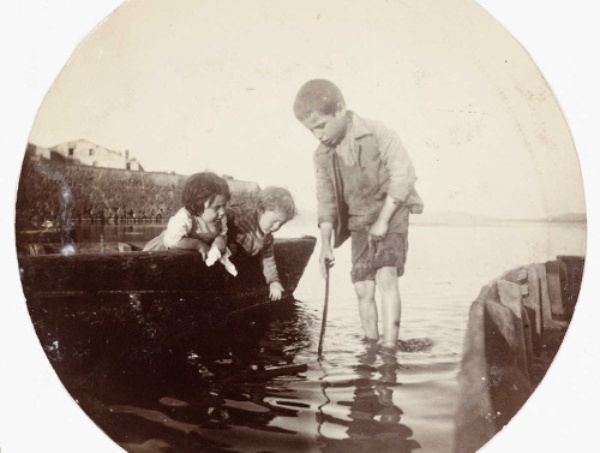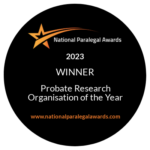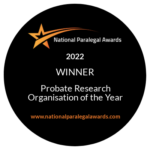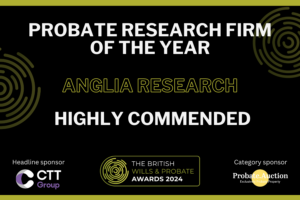Between two families

In this article, case manager Sam Watkin discusses an informal adoption arranged before the Adoption of Children Act 1926. When relevant public records are almost entirely absent, how can probate genealogists prove someone’s identity?
 The case of Joshua Anders remained unsolved for a quarter of a century after his death in the late 1980s. Although it wasn’t apparent from Joshua’s death certificate, he had been informally adopted, and it was perhaps this, combined with the low value of his estate, that meant no-one had cracked the case.
The case of Joshua Anders remained unsolved for a quarter of a century after his death in the late 1980s. Although it wasn’t apparent from Joshua’s death certificate, he had been informally adopted, and it was perhaps this, combined with the low value of his estate, that meant no-one had cracked the case.
Claims must be submitted within 30 years of the date of death, and we were only a few years from the deadline when I first looked at Joshua’s death certificate. He had been born in Liverpool in 1909.
I was unable to find a birth certificate for him, but managed to track him down on the 1939 Register. At the outbreak of the Second World War he was living with what looked to be his sister, Iris, and brother in law, Horace Jeffries.
This matched up: Iris and Horace’s son Andrew Jeffries was described as Joshua’s ‘nephew’ on the death certificate. As both a relative and the informant he would have been able to provide vital information about his uncle, but unfortunately by the time I came to look at the case he had passed away.
An informal adoption
Things became a lot more complicated when I tracked Iris back in time and found her on the 1911 census. She was living with the Anders family, but was listed as an ‘adopted daughter’ with the surname Brown. Since adoptions were not legalised until the Adoption Act of 1926, this must have been an informal adoption.
Joshua, who would have been two years old in 1911, was not part of the household, and although it seemed likely that the Anders family had subsequently adopted him in the same way as Iris, I needed to know what his original name was and who he was living with in 1911.
When it comes to inheritance and intestacy, probate researchers always treat people who have been officially adopted as belonging to their adopted family, but people who are informally adopted are treated as belonging to their biological family.
Brick walls
I think it’s true to say that informal adoptions pose a problem for probate researchers. How do you trace someone’s biological family when names have been changed without any official document to record the event, when children appear on the census within an entirely different family, and when it’s a matter of pure chance whether the adoption is mentioned on any public record at all?
All these factors are potential brick walls and explain why probate genealogists are particularly reliant on family memories when they investigate an informal adoption. Often it’s only by talking to family members that you come across clues to a child’s original identity.
Unfortunately, when I traced and contacted Iris’s granddaughter, she remembered ‘Uncle Joe’, but had no idea how he was connected to her family.
At this point I was almost out of options, so we ordered a copy of the grant of letters of administration for Joshua’s estate. The grant had been taken out by the Duchy of Lancaster in order to administer the estate. It was highly unlikely that it would tell us anything new, but amazingly it referred to the surname Kenworthy as well as Anders (I can only assume that this additional information had come from Andrew Jeffries before his death).
Now that I had some information to work with, I was able to locate a birth certificate for Joshua Kenworthy which matched the date of birth on Joshua Anders’ death certificate. He appears next as a toddler on the 1911 census living with the Kenworthy family. He was one of 11 children. Most of his siblings died without issue. However, his brother Marcus had four children and one was still living, but quite elderly.
Finding beneficiaries
One of our travelling researchers paid her a visit. She was able to tell him that both her grandparents (Joshua’s parents) had died young and their children were placed in various children’s home.
She remembered visiting her Uncle Joshua on a number of occasions. He never married or had children, but she recalled that he lived with his adopted sister from the Anders family and that he assumed the Anders surname.
I found it heartening that Joshua’s niece remembered him. Clearly his family ties weren’t entirely severed by his informal adoption, as they would have been under a formal adoption after the 1926 Adoption of Children Act.
Despite losing his parents at an early age, Joshua ended up with two families and both his biological niece and his adopted great-niece retain memories of him.
Although we came to the case late in the day, it was satisfying to be able to complete it well before the 30 year deadline – and despite the estate’s low value, it was a welcome windfall for Joshua’s beneficiaries.
(For reasons of confidentiality, names and other identifying features have been altered.)
2025 Anglia Research Services All Rights Reserved.
Anglia Research and Anglia Research Services are trading names of Anglia Research Services Limited, a company registered in England and Wales: no. 05405509
Marketing by Unity Online









